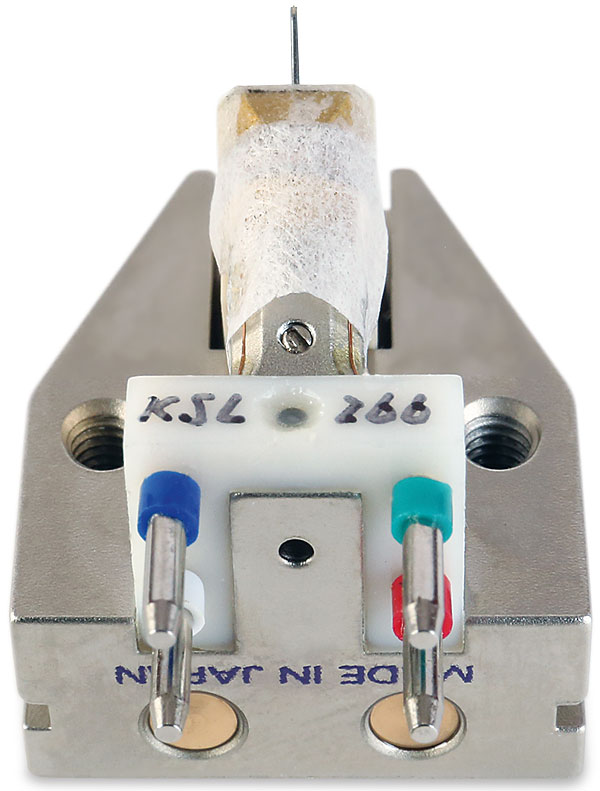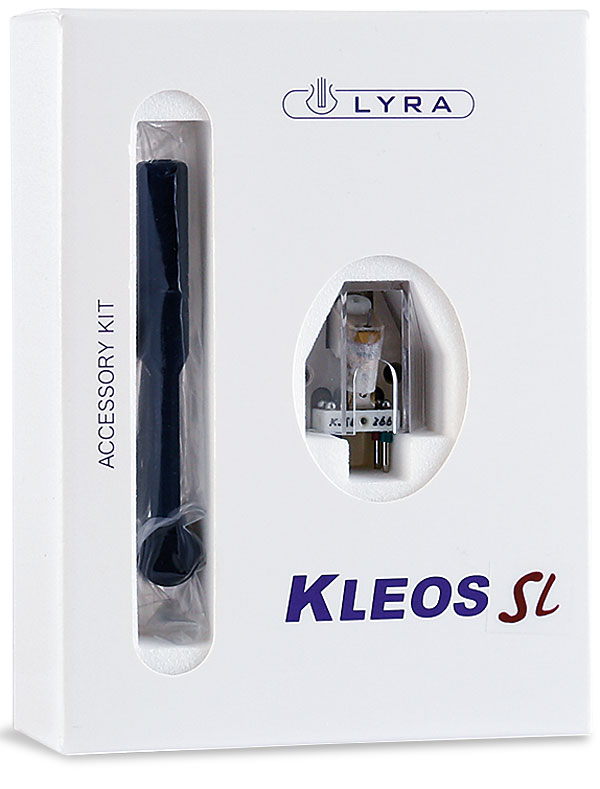Lyra Kleos SL Cartridge Page 2
![]() Bass And Grace
Bass And Grace
It was the rare 12in 45rpm promo single of Roy Orbison's 'Pretty Woman' [Classic Records] which delivered impressively deep, solid and cavernous bass, with airy percussion to match, to exemplify the Kleos' ability to recreate a massive foundation for the sound. Even fiddling with the phono stages' gain settings, the fullness and scale of the lower registers were such that my resurrected Quad 57s [HFN Nov '57] sounded like a subwoofer must have been sneaked into the room. Via MartinLogan Summits [HFN Nov '09], the sound was wall-shakingly robust.
Also independent of output levels was the sweetness of the top-end. Although the notion of such a gargantuan bass output might suggest an aggressive, if not overwhelming sound, the midband and beyond proved gentle and refined, all the better to cosset Orbison's voice, surely one of the clearest, cleanest, sweetest sounds ever to feed a microphone. But the driving force on the track was the percussion, which had a presence that was palpable. It was like experiencing 'Pretty Woman' for the first time, despite hearing many hundreds of plays via myriad systems across no fewer than six decades.

It was the same with the 12in single of Bonnie Raitt's 'Thing Called Love' [Capitol 12CL 576]. As with Roy Orbison, here was a crystal-clear voice and prominent percussion, but the guitar was the focus. Her Fender Strat's slithery twang was delivered with perfect fluidity and sharp accents, rich and wailing through the solo. As for detail, as with 'Pretty Woman', focusing on each element was achieved with ease.
But that contradicts listening for pleasure; forensic attention is for work purposes only, as it kills the joy of music. In both cases, when sitting back and savouring each track as a whole, the Kleos SL proved staggeringly consistent from top to bottom, whatever my descriptions of disparate elements might suggest. This cartridge is voiced to reproduce the performance with authenticity rather than artifice, and it applies to both the individual instruments and the shape and uniformity of the soundstage.
Channel Hopping
As I had the Kleos Mono to hand, curiosity got the better of me and I couldn't resist trying the Kleos SL vs the Kleos Mono to solve two mysteries. Output aside, I wanted to learn if they sounded alike save for the number of channels, and to hear if mono cartridges really improve the playback of mono LPs over simply using an amp's mono button.
I can't speak of other mono cartridges, but the 'True Mono' design employed by Lyra categorically added focus and solidity to the whole of the 45rpm mono edition of Jefferson Airplane's Surrealistic Pillow [Mobile Fidelity MFSL 2-456]. There was no mistaking that I was listening, in effect, to two examples of the same cartridge, and though they differed in output there was also no mistaking the more vivid portrayal offered by the Kleos Mono. This is not a critical reflection on the Kleos SL but evidence (to my ears, that is) that a mono cartridge is a worthwhile investment if you own numerous mono LPs.
That said, it was reassuring to hear how consistent Lyra's designs are from variant to variant, so it was back to stereo. Curtis Mayfield's Superfly soundtrack [Mobile Fidelity MFSL 2-481] opens with 'Little Child Runnin' Wild', with fat-sounding congas, sultry sax and a full string-laden orchestra. With so much going on, the Kleos SL had its work cut out, balancing deep funk with the demands of a classic soundtrack.
Hugging The Rails
While the album veers toward the funky former, stating its case with the second track, 'Pusher Man', subtlety remains a paramount quality as the material is rife with minuscule details. Moreover, Mayfield's voice is an instrument of the upper registers, in places even more falsetto than Michael Jackson's, and the contrast between the bass-prominent backing and Mayfield's vocals and guitar work emphasised another unmistakable virtue: this cartridge tracks its course like a Maglev train.

But back to the 600lb (or should that be 8.8g?) gorilla in the room: noise vs gain. I was surprised – and I mean repeatedly – by how quiet were the backgrounds and even the between-track silences. No, this is not going to worry DS Audio's optical cartridges, which approach CD and other digital sources for their absence of tracing sounds, but it surely settled any remaining reservations I might have had about the cartridge's low-output status.
The SL's natural rival is the regular Kleos, which it betters perhaps in absolute refinement, provided due diligence is paid to the extra gain required. However, you may already own a high-end phono stage or preamp with more than enough gain to dismiss concerns about the Kleos SL's output. In which case, throw caution to the wind. Lyra's latest is an absolute joy.
Hi-Fi News Verdict
Don't let the low output deter you from the Kleos SL because it ain't that low – your retailer can guide you vis-à-vis phono stages with adequate gain. What you're rewarded with is an MC that tracks like a Shure MM of yore, but with all the requisite warmth and humanity of a classic moving-coil, and silkiness to sweeten even aggressive solid-state gear. This is what you need if your listening sessions are marathons.


















































